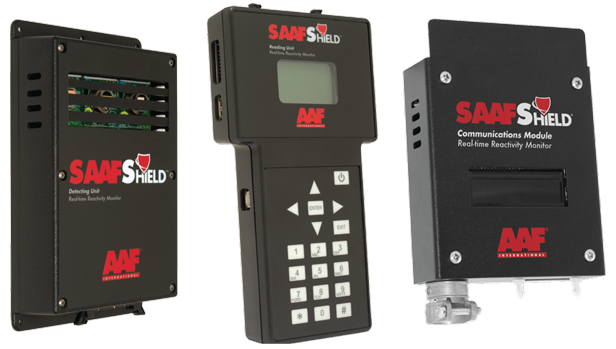
AAF Flanders, working closely with The National Institute for Occupational Safety and Health (NIOSH), developed a recirculating clean air system for indoor firing ranges. The result was safe, clean air for practice and supervision, and substantial savings in cooling/heating.
AAF Flanders designed a system of airflow, filtration and recirculation based on proven use of systems in hundreds of applications around the world. The combination of air patterns with the AAF Flanders system for contaminant removal permits recirculation of air that makes air-conditioning systems function more efficiently on fewer dollars.
Lead Exposure and Contaminant Risk
Indoor firing ranges produce large quantities of airborne pollutants, including lead and noxious gases. The most significant potential source of airborne lead at the firing line is caused by the hot flames of burning gunpowder acting on the exposed lead base of a projectile. The metallic lead in the projectile can also become airborne lead particles through heat from friction between the bore of the firearm and an unjacketed lead projectile. Downrange, lead may become airborne from splatter caused by projectiles hitting backstops, floors, walls, or baffles.
In addition, maintenance and/or repair of the backstop or other range equipment may cause settled lead dust to become airborne. Improper cleaning of a range may also cause lead dust to become airborne. Ranges that allow lead dust to accumulate have increased lead exposure risks, since the accumulated dust can become airborne from muzzle blast and/or shooter movement. Concentrations can easily exceed safe levels of exposure to workers and shooters, and failure to comply with the Occupational Safety and Health Administration (OSHA) and National Institute for Occupational Safety and Health (NIOSH) regulations can result in significant fines for range owners.

Controlling Contaminant Levels
By law, contaminant levels within an indoor firing range facility must be controlled.- Lead must be limited to a level of 50 ug/m(3) averaged over an 8-hour period.
- Carbon monoxide must be controlled to 50 ppm.
- Surveys from the National Institute for Occupational Safety and Health (NIOSH) indicate that the majority of indoor firing ranges operate with air contamination levels far exceeding acceptable standards.
Optimize Your Environment
The primary purpose of an air filtration system in these facilities is to prevent the build-up of toxic gases (CO2, CO, NO) and particulates, including lead and other discharge products. The benefits of proper air filtration include:
- Elimination of dangerous air contaminants, resulting in improved quality of life for employees and users alike
- Compliance with EPA and OSHA regulations
- Reduced liability from lawsuits resulting from employee health problems
- Reduced employee absenteeism and disability
- Improved fire range capability
A thorough air filter audit of your HVAC systems is the first step that AAF Flanders takes, in order to provide you with professional guidance and analysis for cost savings and liability reduction. By conducting this audit, we strive to understand your current state and advise you on how your facility could perform even better, thereby helping you save money, reduce risk, and save time.
Click here to schedule your audit today!



